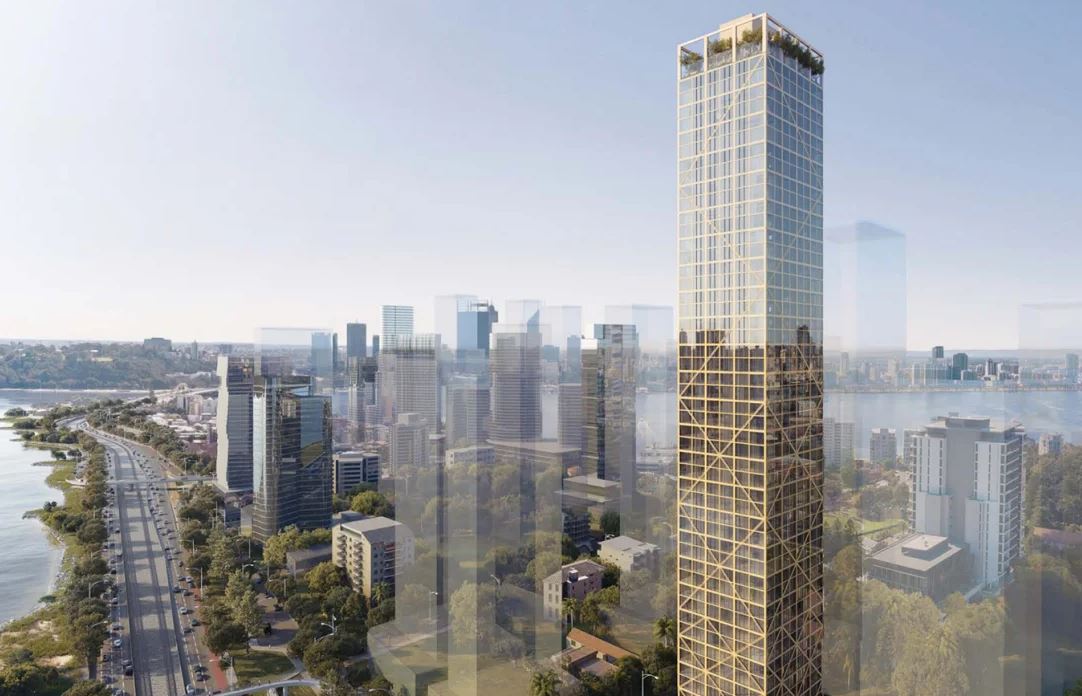
Western Australia is set to make history with plans for the world’s tallest wooden building, as authorities in Perth have granted approval for a ground-breaking project. The proposed tower, known as the C6 building, will soar to a height of 191.2 meters (627 feet), nearly double the height of the current record holder. This ambitious endeavour is a “hybrid” tower, combining mass timber and reinforced concrete in its construction.
Grange Development, the visionary behind this project, envisions that 42% of the tower will be crafted from timber, with the core and columns reinforced using concrete. If successfully completed, the C6 building will surpass the Ascent tower in Milwaukee, Wisconsin, which currently holds the title of the world’s largest timber-concrete hybrid building, standing at 25 stories or 86 meters (284 feet).
Situated on Charles Street in South Perth, the C6 tower is poised to outshine the forthcoming Atlassian Headquarters in Sydney, another hybrid timber building that has been touted as a record-breaker. Both projects will utilize laminated timber beams combined with a steel exoskeleton for structural support. What sets the C6 tower apart is its commitment to sustainability. Grange Development aims to make it Western Australia’s first carbon-negative residential building, signalling a major stride towards environmentally conscious construction. Director James Dibble emphasized their core intention, stating, “The intent of C6 has always been, at its core, a straightforward proposition. Our aspiration with C6 is to shift the focus towards a more climate-conscious approach.” In pursuit of this goal, the C6 tower will incorporate approximately 7,400 cubic meters (over 260,000 cubic feet) of timber sourced from 600 trees. Dibble highlights the importance of this approach, stating, “We can’t grow concrete,” and positions their project as “a new open-sourced blueprint that utilizes hybrid construction methodology to offset the carbon within our built environment, which is the single biggest contributor to climate change.” The project also boasts a range of green features, including a rooftop garden, an urban farm, and resident access to 80 new fully-electric Tesla Model 3s, further cementing its commitment to sustainability.
Philip Oldfield, an associate architecture professor and head of the University of New South Wales’ School of Built Environment, praised the project’s environmental credentials. He noted that the typical construction of tall buildings relies heavily on steel and concrete, with cement alone responsible for 8% of all CO2 emissions. By replacing traditional construction materials with timber, the C6 tower is poised to significantly reduce its environmental impact.